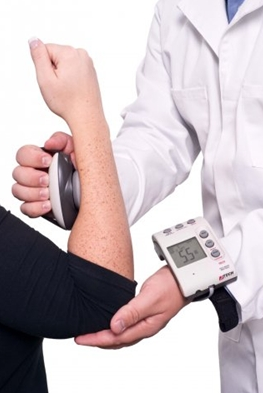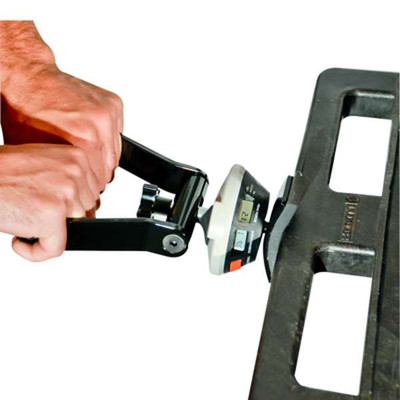 14th Jul 2017
14th Jul 2017
How to Perform Accurate Functional Job Task Evaluations
What are Functional Job Task Evaluations Used for?

Full-scale functional evaluations are essential to accurately measure a potential or current employee’s ability to fulfill the actual requirements to be successful in the position. The best types of functional evaluations are conducted using tools and tests that are known to be reliable and fair. Functional employment testing includes an assessing whether a potential candidate can perform the physical demands of the job, using tests calibrated to the precise measurements and weights required for the job and tools that can assess overall strength. This type of functional testing has been found the be the most effective predictor of a candidate’s ability to perform specified job functions.
Not only does new-hire functional testing confirm a candidate’s ability to succeed in job tasks, it also helps:
- Reduces injuries within the first two years of employment
- Decreases the cost and incidence of workers’ compensation claims
- Lowers costly employee turnover
The physical testing evaluation will help specifically identify the testing subject’s tolerance and ability related to all areas related to their job including, but not limited to: sitting, standing, walking, lifting, carrying, pushing, pulling, manual dexterity, reaching, squatting, bending, range of motion, sensory and muscle testing.
An important element of a functional examination is the assessment of muscle strength. For potential employers and recruiters to get an accurate measurement of strength, there are specific strength testing tools that can be used to receive the needed data accurately and safely.
These tools fall in two groups:
- Overall manual muscle testing: This procedure uses devices like handheld dynamometers and back-leg-chest dynamometers for the evaluation of both function and strength in larger muscle groups, including a picture of overall strength.
- Isolated strength testing: This group of testing uses sophisticated strength measuring devices (pinch gauges, hand-grip dynamometers) in order to assess specific, smaller areas essential to certain job tasks.
To ensure fair and reliable testing results, it’s important to administer evaluation testing in accordance to specific rules and follow a testing protocol for each testing subject. This not only improves accuracy but safeguards fairness in the job applicant process.
We’ve compiled some of the best tips to use with functional evaluations to guarantee accurate results.
The Top Tips for Performing Accurate Functional Evaluation and Job Skills Testing
- Isolate the correct muscle groups—It almost goes without saying, but identifying the correct muscle groups for testing is a vital rule when performing an accurate job task analysis. Specific muscle groups are used for certain job tasks and once isolated point towards the correct device to use for testing.

For example, a back-legs-chest dynamometer is a great device to use when testing for certain manual labor positions. Not only that, but it’s important to always communicate to the subject which muscle or group of muscles is being isolated before any force is applied to perform the test both accurately and safely.
- Use appropriate resistance—When performing muscle testing, resistance should be applied and released gradually. This gives the testing subject time to offer resistance or force. The results will show a subject’s ability to either resist (strong) or not resist (weak) the externally applied force over the specified testing time.
- Always Communicate—Communication is key to getting accurate manual muscle testing results safely. It’s easiest to establish a communication protocol that is followed each time when performing functional evaluation testing.
Some points to consider is to always notify the testing subject about:
- The muscle group or groups to be tested
- How the test should be performed by the testing subject
- How the tester will apply resistance and when
- The position the testing subject will maintain in the test
- Any stabilization and how it will be utilized (i.e. Stability belts)
- How long the test will be performed
- How many times the test will be performed
- Clear instructions as to start and completion of test
- Positioning: Positioning is vital for getting accurate results when muscle testing. The testing subject and area of the body to be tested should always be positioned comfortably on either a firm surface or in a specified testing position. When positioned correctly, the muscle fibers to be tested are correctly aligned and the test can be performed safely.
- Stabilization: In addition to positioning, stabilization is another important aspect to consider when planning functional evaluation testing. There can be a tendency for the testing subject to want to overcompensate with other muscle groups to perform well on the test. Not only is this unnecessary, because the isolated muscles are those needed to successfully perform job tasks, but this can skew the accuracy of the test and/or lead to injury.

For example, when using a push/pull gauge can accurately assess a testing subject’s ability to push and pull equipment like dollies or manual trucks and with proper stabilization mimics safe working practices to limit risk of low back injury. Stabilization can be external, for example with a support belt, that is applied to the proximal part of the body to provide counter pressure to the resistance.
- Range of Motion: When testing for range of motion, it’s important to remember the testing subject should move through the test movement actively against gravity. This can also be completed with the tester moving the subject’s joint through the test movement. Once completed, the joint is returned to starting positioned.
- Test Non-Dominant Side First: It may sound counter-intuitive, but it’s recommended to test the non-dominant or uninvolved side first. This helps ascertain a baseline of “normal” strength before repeating the test on the dominant or involved side. This can also be important for tasks that require bilateral strength and/or dexterity.
For example, when performing a dexterity test which can assess a testing subject’s proficiency with mechanical tools such as screwdrivers, it is important to have accurate results for the dominant side. However, bilateral results are vital for assessing ability for job tasks that require use of both sides, sometimes equally, for example when operating a forklift.
Functional evaluations results are an important part in determining a potential employee’s ability to succeed in their intended position. Accurate results are imperative when assessing job applicants. Using a specified protocol utilizing these tips will help ensure you get reliable results every time you perform functional evaluations.





